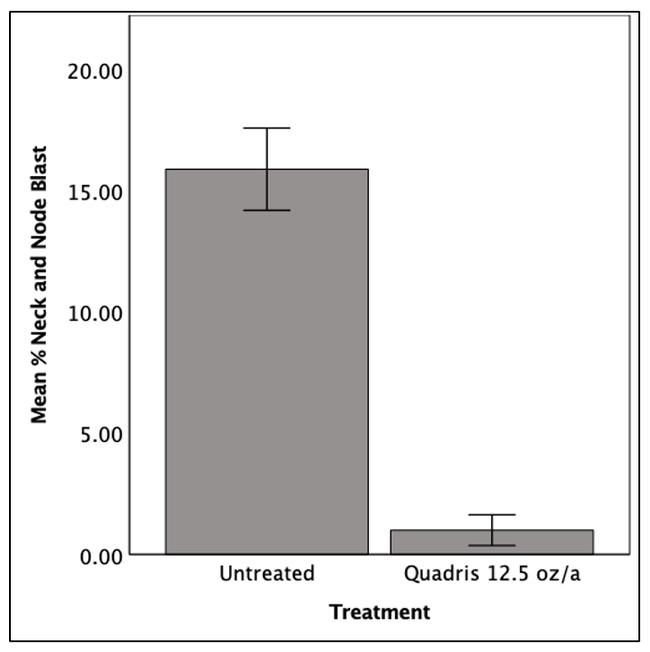This year we saw severe blast in some areas of the Valley. I did not see any leaf blast during tillering and only noticed blast during heading. After talking with some growers and PCAs, it seems that this was common in several areas. I also saw and got reports of severe blast in drill or dry seeded rice. In these cases, the blast was so severe that even fungicide applications were not able to reduce the blast incidence significatively. Kernel smut was also an issue in some fields, but it did not seem to be as bad an issue as blast was. Tiller diseases were average, but I seemed to notice more aggregate sheath spot this year than previously.
Why was blast more prevalent this year? Several factors can increase the incidence of blast, but two that come to mind are excess nitrogen and relative humidity. With many fields being fallowed last year, there might have been more nitrogen in the soil available for the plant. If the rate of aqua N was not reduced, the field may have ended up with some excess nitrogen that could have made blast a problem
Fig. 1. Maximum and minimum percent relative humidity for 2022 and 2023 at the Williams CIMIS station.
Why do we see more severe blast when dry or drill-seeding? It is not clear why, but it may have to do with how blast is transmitted from residue or seed to seedling. There might be also some physiological changes in the plants that make them more susceptible.
The only blast resistant variety commercially available at this point is M-210. I did not see any blast or got any reports of blast in M-210. In areas where blast is a common occurrence, and when dry or drill-seeding, I would recommend using M-210. Variety trials from previous years have shown that M-210 yields the same as M-206. I will compare M-206 and M-210 yields from this year's variety trials and present them during our winter meetings.
Another common question I get is if azoxystrobin (the active ingredient in Quadris) is still effective against blast. I was able to set up a trail in a field in Glenn County and results showed that the most commonly used rate of Quadris (12.5 oz/a) was effective against blast (fig. 2). There could be some differences in susceptibility to the fungicide in different areas, so more trials are needed to answer this question thoroughly.
Fig. 2. Percent neck or node blast in M-206 treated with Quadris. Treatment was made at the late boot, early heading stage. Glenn County, 2023

